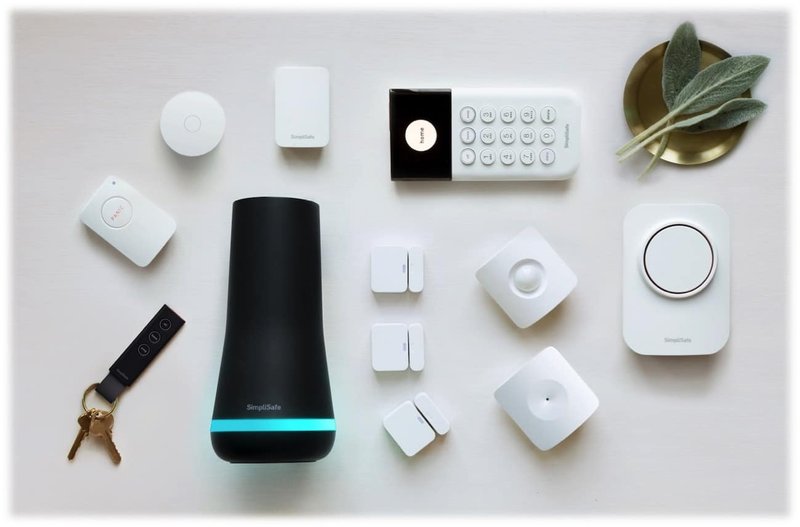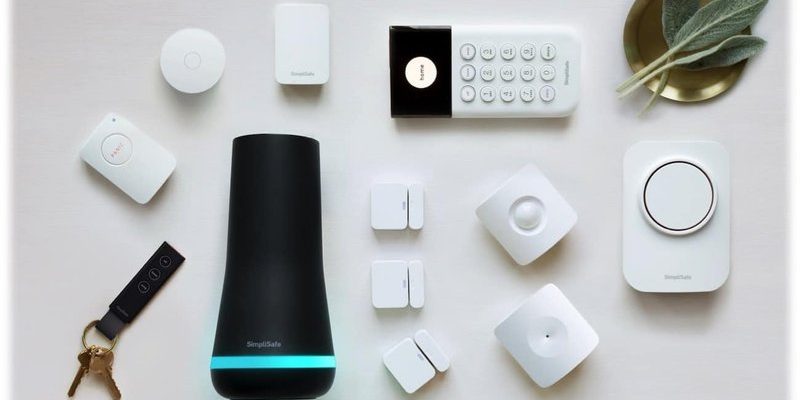
Here’s the thing: registering your SimpliSafe system isn’t just a red tape chore—it’s how you get the most out of all those neat features (like remote monitoring, emergency dispatch, and troubleshooting help). So, what exactly do you need to get started? If you’re staring at the box and your phone, wondering if you need a magnifying glass or a master’s degree, don’t worry. I’ll walk you through every bit of info you’ll need, why it matters, and how not to get tripped up along the way.
Why Registration Matters for Your SimpliSafe System
Let me explain why you can’t just plug in your SimpliSafe sensors and call it a day. Registering your SimpliSafe security system unlocks all its real magic. Without registration, you’re basically running a fancy noise-maker that can’t call for help when you need it. The registration process connects your devices to your personal account and pairs them with SimpliSafe’s monitoring service.
When you register, you’re not just entering your name and moving on. You’re setting up the system so SimpliSafe knows whose home it’s protecting, where it is, and how to contact you if there’s a problem. Registration is also what syncs your device with your phone, enabling remote control and quick troubleshooting if something stops working. If you skip this step, you lose access to things like the mobile app, firmware updates, and quick battery status alerts.
Honestly, it’s a little like buying a car but never signing the paperwork—you can sit in it, but you’re not really going anywhere. Registration officially ties you to your system in SimpliSafe’s eyes, giving you access to support, warranty service, and critical safety features.
Basic Personal Information You Need
First up, you’ll need your personal information. This isn’t just SimpliSafe being nosy—it’s essential for your protection. You’ll be asked for:
- Full Name: The primary account holder who will get all alerts and updates. If you’re sharing your home, pick the person who’s usually in charge of emergencies or tech stuff.
- Home Address: This is quite literally where the system is installed. It’s crucial for emergency dispatches, so double-check the street number and apartment info. If you’re moving soon, don’t fudge the details—update it once you settle.
- Contact Information: Usually, a phone number and email address. This is how SimpliSafe will reach you if your system detects trouble, needs a battery replacement, or if there’s any reset or troubleshooting needed.
You might be wondering if it’s okay to skip the email or use a backup number. Honestly, don’t. If your system ever goes off or if there’s a problem syncing devices, SimpliSafe needs to get in touch fast, and a working phone and email make that possible.
Device and System Information Required
After your personal details, you’ll need to provide specific info about the SimpliSafe equipment you’ve bought. Think of it like telling the DMV exactly what car you drive—not just “a blue one.” Here’s what’s usually required:
- Base Station Serial Number: This unique code is typically on the bottom or back of your main unit. It’s the heart of your system and tells SimpliSafe which network of sensors and remotes belong to you.
- Sensor & Device IDs: If you’ve got extra door/window sensors, cameras, or remotes, you may need to enter their unique codes during setup. This helps the system pair and sync everything correctly.
- Keypad Code: You’ll create or confirm a secret code to arm/disarm the system. Choose something memorable, not just “1234” or “0000” (trust me, you don’t want your neighbor guessing it).
If you’ve ever tried to sync a new phone with your laptop but couldn’t find the right Bluetooth code, you’ll recognize the importance of these ID numbers. Missing a digit can mean your system’s remote can’t control the alarm, or the app won’t pair for alerts.
Monitoring Plan Details (If You Choose One)
A SimpliSafe security system works just fine as a local alarm, but most people choose a professional monitoring plan for extra peace of mind. Registering for monitoring adds a few extra info steps:
- Monitoring Plan Selection: You’ll pick between different options (like Interactive or Standard) based on how much control and support you want—think remote arm/disarm, video backups, or just basic dispatch.
- Emergency Contact List: SimpliSafe will ask for the names and numbers of other people to call if you don’t answer during an alarm. Friends, family, or neighbors are all fair game—but make sure they know!
- Payment Information: You’ll have to enter a credit or debit card if you want ongoing monitoring. If you’re unsure about committing, you can often start with a free trial and enter payment later.
If you’re on the fence about monitoring, here’s a tip: even universal remotes and DIY systems can only do so much without that professional layer. With SimpliSafe, the registration process for monitoring is flexible. You can upgrade, downgrade, or pause your plan—just keep your details current for uninterrupted service.
Creating and Linking Your SimpliSafe Account
Everything comes together with your SimpliSafe account. This is your digital home base—where you manage settings, pair new devices, and access troubleshooting support. Here’s what you’ll do:
- Create a Username and Password: Your email usually works as your username. Choose a secure password and write it down somewhere safe—yes, seriously, even if you hate passwords.
- Link Devices to Account: During registration, the app or website will prompt you to enter those serial codes and pair your remotes. It can feel a bit like code-breaking, but it’s mostly copy-and-paste.
- Set Up Notifications: You’ll choose how you want to get alerts—text, email, app push notifications, or all three. If you ever need to reset your password or battery status, this is where you’ll get those prompts, too.
If you get stuck, SimpliSafe’s app usually walks you through common issues, but sometimes it can take a few resets or retries if your WiFi is fussy. The account ties all your equipment and monitoring features together, making it easy to add new sensors or remotes down the road.
Common Registration Problems and Quick Fixes
Now, nobody likes wrestling with tech, but setup snags happen—especially with home security. You might run into issues syncing a device, pairing with your phone, or getting the battery warning to reset. Here’s how to handle the most common headaches:
- Device Won’t Pair or Sync: Check that you’ve entered serial numbers exactly—letters, dashes, and all. If something still won’t connect, try resetting the device or base station by removing the battery for a few seconds. Restart the registration process if needed (yes, sometimes the classic “turn it off and on again” really works).
- Wrong Address or Contact Info: If you move or typo your address, update it immediately in your SimpliSafe account. Otherwise, emergency services could be sent to the wrong place, which is useless and potentially risky.
- App Not Recognizing System: Double-check that your phone’s Bluetooth and WiFi are both on. Sometimes, switching to a different network or restarting your phone helps the SimpliSafe app spot your base station for syncing and troubleshooting.
Honestly, setting up a SimpliSafe system is usually smoother than programming a universal remote, but even the best tech can throw a curveball. Don’t be afraid to call SimpliSafe’s support if you’re truly stuck—their team is actually pretty friendly.
Tips for Keeping Your SimpliSafe Info Secure
You might be wondering if all this info floating around online is safe. Here’s what you can do to keep your registration details—and your actual home—secure:
- Use Strong Passwords: Don’t recycle passwords from other accounts. It’s worth the few extra seconds to protect your security system from would-be hackers.
- Enable Two-Factor Authentication: If SimpliSafe offers it, turn it on. This adds an extra layer if someone ever tries to reset your account or pair a rogue remote.
- Don’t Share Your Code: Whether it’s the keypad pin or your main account password, keep it private. Only share with people you trust completely (like your partner or a very responsible roommate).
- Update Info Promptly: If you change your number, move, or add new emergency contacts, log in and update those details right away. A stale phone number could mean missing an urgent alert or failing to dispatch help in a crisis.
Security isn’t just about hardware—it’s about the info that ties your system to you. Treat your account and codes with the same care as you’d treat your house keys.
What If You’re Setting Up Used or Transferred Systems?
Maybe you picked up a SimpliSafe system second-hand, inherited one from a friend, or are moving into a house where one’s already installed. Registering a previously used SimpliSafe system is a little bit different, but not impossible.
- Factory Reset the Base Station: Most used systems have to be reset so the old owner’s info and codes are wiped. There’s usually a reset button or code; check the manual or SimpliSafe’s support site if you can’t find it. This ensures your remote and app will sync with your own account, not the previous owner’s.
- Re-Enter All Device Info: Go through the pairing and registration steps as if it’s brand new. Serial numbers, sensor codes, and all personal/contact details need to be re-added for your safety and convenience.
- Double-Check Monitoring Plans: If the old owner had a monitoring plan, you’ll need to set up your own. Otherwise, you might miss critical notifications or emergency support.
Honestly, registering a second-hand system might take a bit more code entering and troubleshooting (especially if the last owner didn’t factory reset), but once you have your account info and devices reset, it works exactly like new.
Final Thoughts: Turning Registration Into Real Security
The info you need to register your SimpliSafe security system isn’t complicated, but it matters—a lot. It’s not just about ticking boxes. It’s about tying your home, your devices, and your personal peace of mind together in a way that really works. Whether you’re running the latest SimpliSafe base station, plugging in extra remotes, or troubleshooting a sync issue, that registration process is the heart of getting help when you need it most.
So take a few minutes, double-check your address, grab those serial codes, and get your SimpliSafe account squared away. You’ll be glad you did—especially the first time your phone pings with an alert or the monitoring team calls to check in after an alarm. Registration turns a box of gadgets into a real security system, and that’s what home safety is all about.
